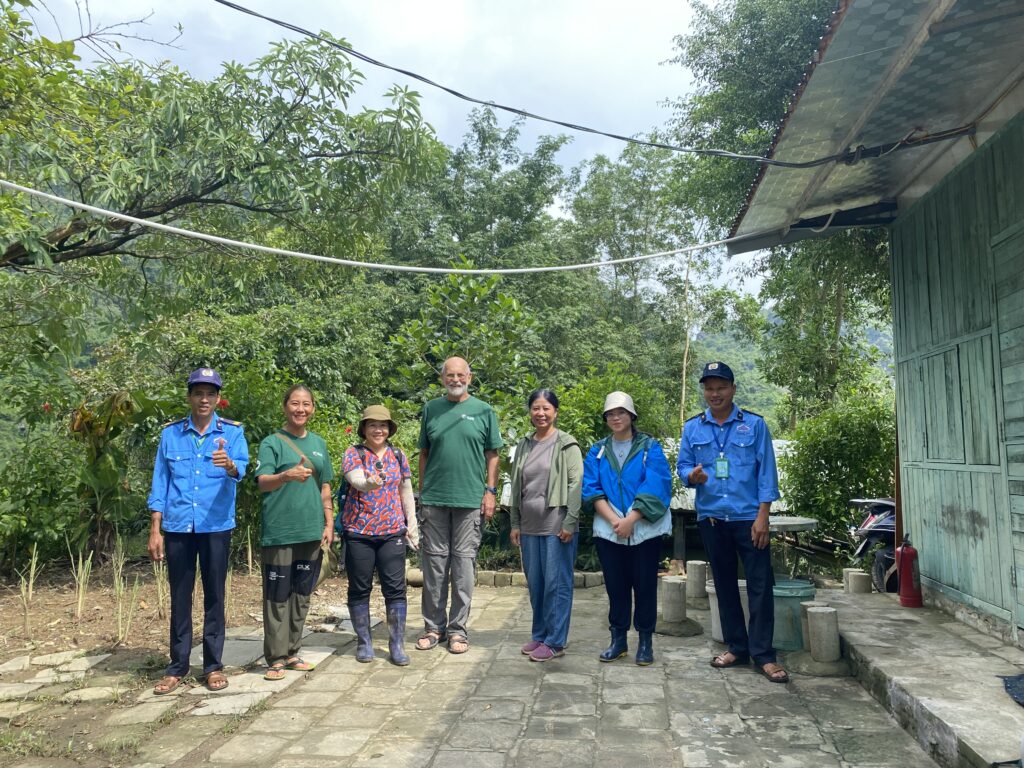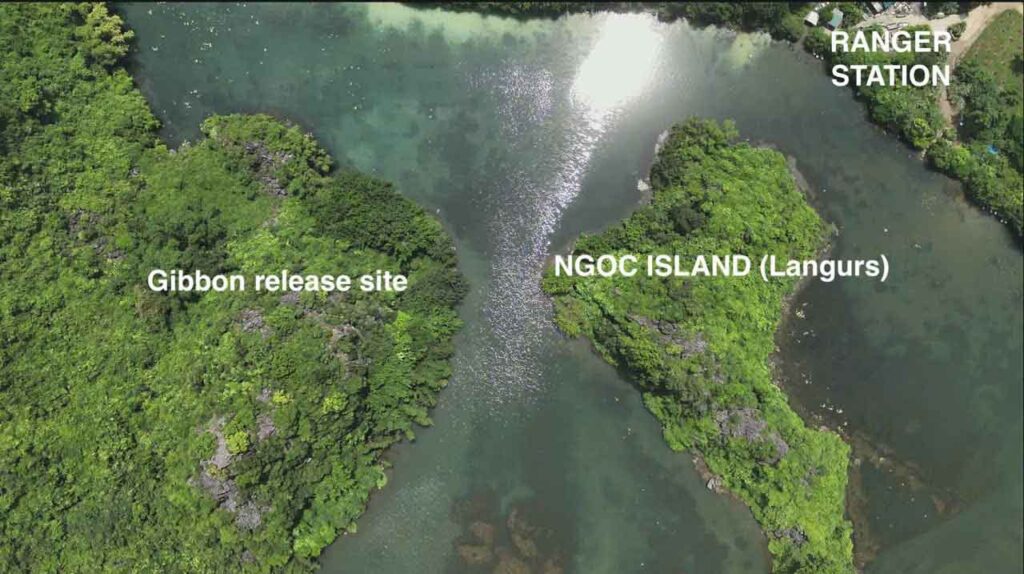From September 21 to September 24, 2024, with the permission of the People’s Committee of Ninh Binh province, Three Monkeys Wildlife Conservancy, in collaboration with experts from the Institute of Archaeology, conducted a comprehensive vegetation survey at the Trang An Scenic Landscape Complex. This initiative is part of the preparation for a project to reintroduce the white-cheeked gibbon species to Ninh Binh.

Survey team at Trang An Scenic Landscape
Despite the unpredictable weather in Ninh Binh during September, the first day of the survey proved successful, with the recording of over 70 plant species in areas identified as potential habitats for the reintroduction of white-cheeked gibbons. However, the following days were less favorable due to poor weather conditions, yet more than 50 additional species were recorded. Some notable plant families include the Ficus genus, with various species such as banyan, fig, and peepul trees in abundance. Climbing plants from the Bauhinia genus and vine species from the Annonaceae family, such as Desmos chinensis (Chinese desmos), dominated the lower and limestone cliff regions.

Survey site in Trang An

Plant species found during the survey at Trang An
The limestone habitat, being unique and selective in supporting vegetation, also hosted some rare plant species. Among these were Acalypha kerrii, Kadsura heteroclita (VU – vulnerable species), and Cycas balansae (limestone cycad), precariously growing on cliffs. A few unusual species, potentially new discoveries for Vietnam’s flora, were also observed.
Highlighted plant species include:
This diversity in plants but also its hight structural creates a stable and rich ecosystem, providing food and shelter for numerous animal species., including for the nothern white cheeked gibbon.
The integration of cultural and natural elements helps promote a holistic approach to conservation, where safeguarding both ecological and historical treasures becomes a priority. The karst formations also serve as natural refuges, shielding certain species from human disturbances and creating ideal conditions for reintroduction projects like the white-cheeked gibbon initiative.
Trang An has already proven its value as a conservation site through previous wildlife reintroduction projects. One notable success is the reintroduction of the critically endangered Delacour’s langur (Trachypithecus delacouri). This effort began in 2020 with the release of four individuals, and the population has since grown to seven, indicating that the species is thriving in the protected environment. The success of the Delacour’s langur reintroduction demonstrates that the landscape provides the necessary resources and protection for endangered species to recover and flourish.
In conclusion, the Trang An Scenic Landscape is an extraordinary site that offers immense potential for wildlife conservation, cultural preservation, and sustainable development. Its unique combination of rich biodiversity, historical significance, and community-driven conservation efforts makes it a beacon for future reintroduction projects and a key conservation hub in Vietnam.
Short video of the survey in Trang An
READ MORE
© 2024. Three Monkeys Wildlife Conservancy.
NGO with headquarter in Belgium (registration number: 0741.669.522)
